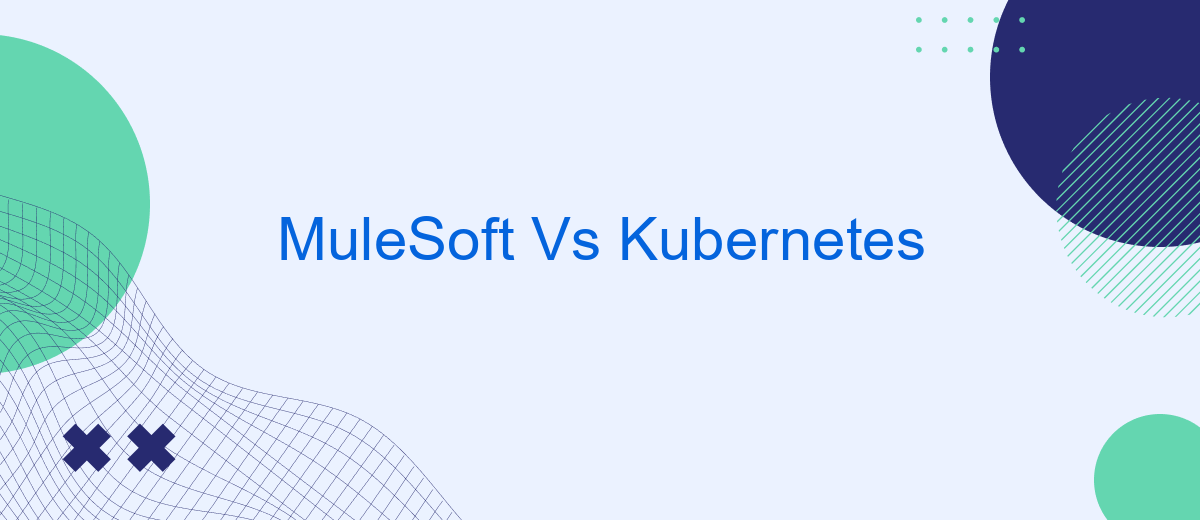In the rapidly evolving landscape of enterprise technology, MuleSoft and Kubernetes stand out as powerful tools for different purposes. MuleSoft excels in API management and integration, enabling seamless connectivity across diverse systems. Meanwhile, Kubernetes is the go-to platform for container orchestration, ensuring scalable and efficient deployment of applications. This article explores the strengths and differences between these two pivotal technologies.
Introduction
In the rapidly evolving landscape of technology, businesses are constantly seeking efficient solutions to manage their applications and services. Two prominent platforms that have gained significant attention are MuleSoft and Kubernetes. While both offer unique capabilities, understanding their differences and use cases is crucial for making informed decisions.
- MuleSoft: A comprehensive integration platform for connecting applications, data, and devices.
- Kubernetes: An open-source system for automating the deployment, scaling, and management of containerized applications.
Choosing between MuleSoft and Kubernetes depends on your specific needs. MuleSoft excels in providing robust integration solutions, making it ideal for businesses looking to streamline their data and application workflows. On the other hand, Kubernetes is perfect for those aiming to efficiently manage containerized applications at scale. For businesses focusing on seamless integrations, services like SaveMyLeads can further simplify the process, offering automated data transfer between various platforms.
MuleSoft

MuleSoft is a widely recognized integration platform that enables businesses to connect various applications, data sources, and APIs seamlessly. It provides a comprehensive suite of tools that facilitate the design, deployment, and management of APIs and integrations. With MuleSoft, organizations can streamline their processes and improve data flow across different systems, enhancing overall efficiency and reducing operational silos.
One of the standout features of MuleSoft is its ability to simplify complex integrations through its intuitive Anypoint Platform. This platform offers pre-built connectors, templates, and integration patterns that significantly reduce the time and effort required to set up integrations. Additionally, services like SaveMyLeads can complement MuleSoft by automating lead data transfers between different marketing and CRM systems, ensuring that businesses can maintain a consistent and up-to-date database without manual intervention. This synergy between MuleSoft and services like SaveMyLeads can lead to more efficient and effective business operations.
Kubernetes

Kubernetes is an open-source platform designed to automate deploying, scaling, and operating application containers. It enables developers to manage containerized applications across multiple hosts, providing mechanisms for deployment, maintenance, and scaling of applications. Kubernetes is highly resilient, ensuring there are no downtime issues, and efficiently manages the load across clusters.
- Automated Rollouts and Rollbacks: Kubernetes can automatically roll out changes to your application or its configuration, monitoring the health to ensure all instances are not down simultaneously.
- Service Discovery and Load Balancing: Kubernetes can expose a container using the DNS name or their own IP address, and if traffic to a container is high, Kubernetes can load balance and distribute the network traffic.
- Self-Healing: Kubernetes restarts containers that fail, replaces and reschedules containers when nodes die, and kills containers that don’t respond to user-defined health checks.
For those looking to integrate various services and automate workflows, SaveMyLeads offers a seamless solution. It allows businesses to set up integrations without needing to write a single line of code, simplifying the process of connecting different applications and services. This can be particularly useful when managing complex Kubernetes environments where multiple services need to interact seamlessly.
Comparison

MuleSoft and Kubernetes are two distinct platforms serving different purposes in the tech ecosystem. MuleSoft is primarily focused on API management and integration, enabling seamless connectivity between various applications and data sources. Kubernetes, on the other hand, is a container orchestration platform that automates the deployment, scaling, and management of containerized applications.
When comparing these two platforms, it's important to understand that they address different challenges. MuleSoft excels in simplifying complex integrations, while Kubernetes shines in managing containerized environments. However, both platforms can complement each other in a microservices architecture, providing robust solutions for modern applications.
- MuleSoft: Best for API management and integration
- Kubernetes: Ideal for container orchestration and management
- SaveMyLeads: Useful for automating lead management and integrating with various services
In conclusion, choosing between MuleSoft and Kubernetes depends on your specific needs. If your primary focus is on integrating multiple systems and managing APIs, MuleSoft is the way to go. For those looking to efficiently manage containerized applications, Kubernetes is the better choice. Additionally, tools like SaveMyLeads can enhance your integration capabilities by automating lead management processes.
Conclusion
In conclusion, both MuleSoft and Kubernetes offer powerful solutions for managing integrations and container orchestration, respectively. MuleSoft excels in providing a comprehensive integration platform that simplifies connecting various applications and data sources, making it ideal for businesses looking to streamline their workflows. On the other hand, Kubernetes shines in its ability to manage containerized applications at scale, offering robust features for deployment, scaling, and maintenance.
Choosing between MuleSoft and Kubernetes ultimately depends on your specific needs and objectives. If your primary goal is to enhance integration capabilities across diverse systems, MuleSoft is a strong contender. Conversely, if your focus is on efficiently managing containerized applications, Kubernetes is the go-to solution. For those looking to further optimize their integration processes, tools like SaveMyLeads can offer additional automation and efficiency, ensuring seamless data flow between platforms. Both technologies have their unique strengths, and understanding these can help you make an informed decision tailored to your business requirements.
FAQ
What are the primary use cases for MuleSoft and Kubernetes?
Can MuleSoft and Kubernetes be used together?
How does MuleSoft handle scaling compared to Kubernetes?
Is Kubernetes necessary for running MuleSoft applications?
What tools can be used to integrate and automate workflows with MuleSoft?
Would you like your employees to receive real-time data on new Facebook leads, and automatically send a welcome email or SMS to users who have responded to your social media ad? All this and more can be implemented using the SaveMyLeads system. Connect the necessary services to your Facebook advertising account and automate data transfer and routine work. Let your employees focus on what really matters, rather than wasting time manually transferring data or sending out template emails.
